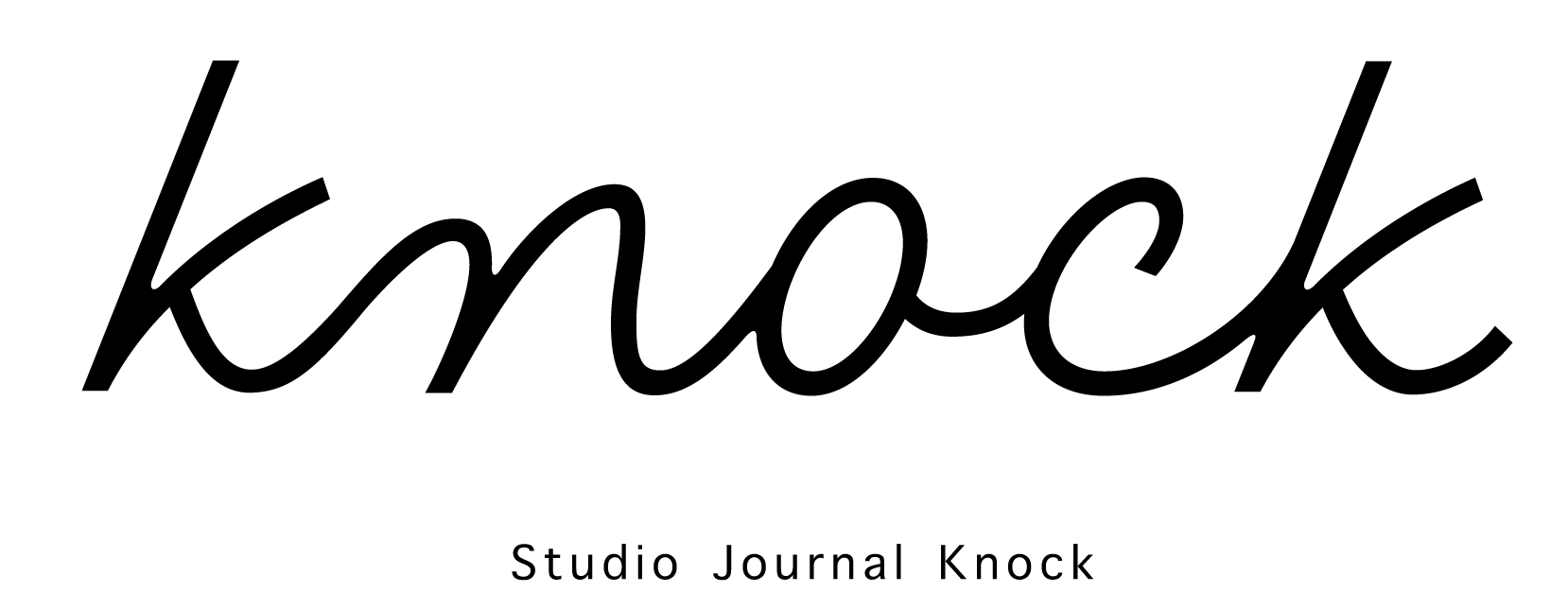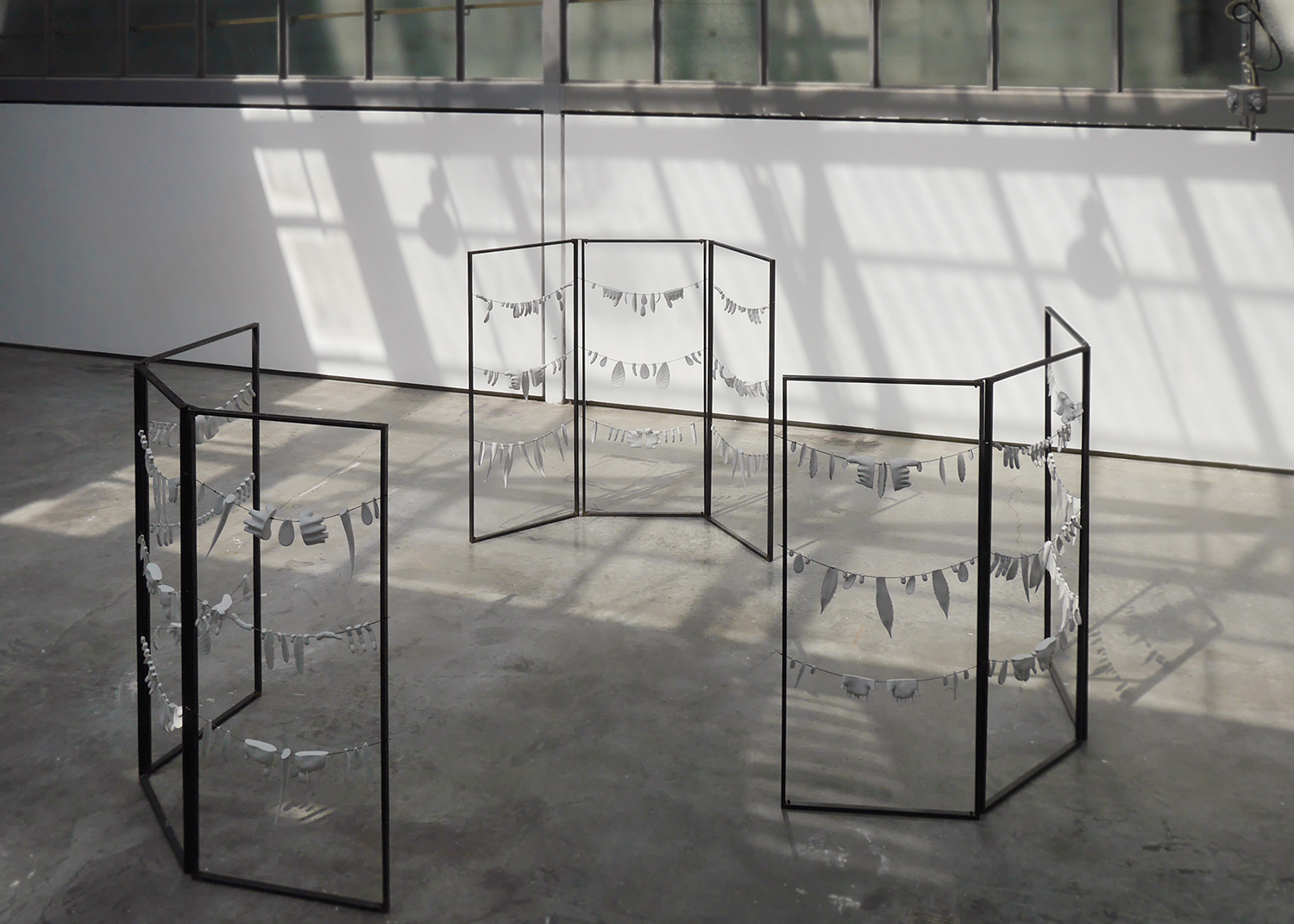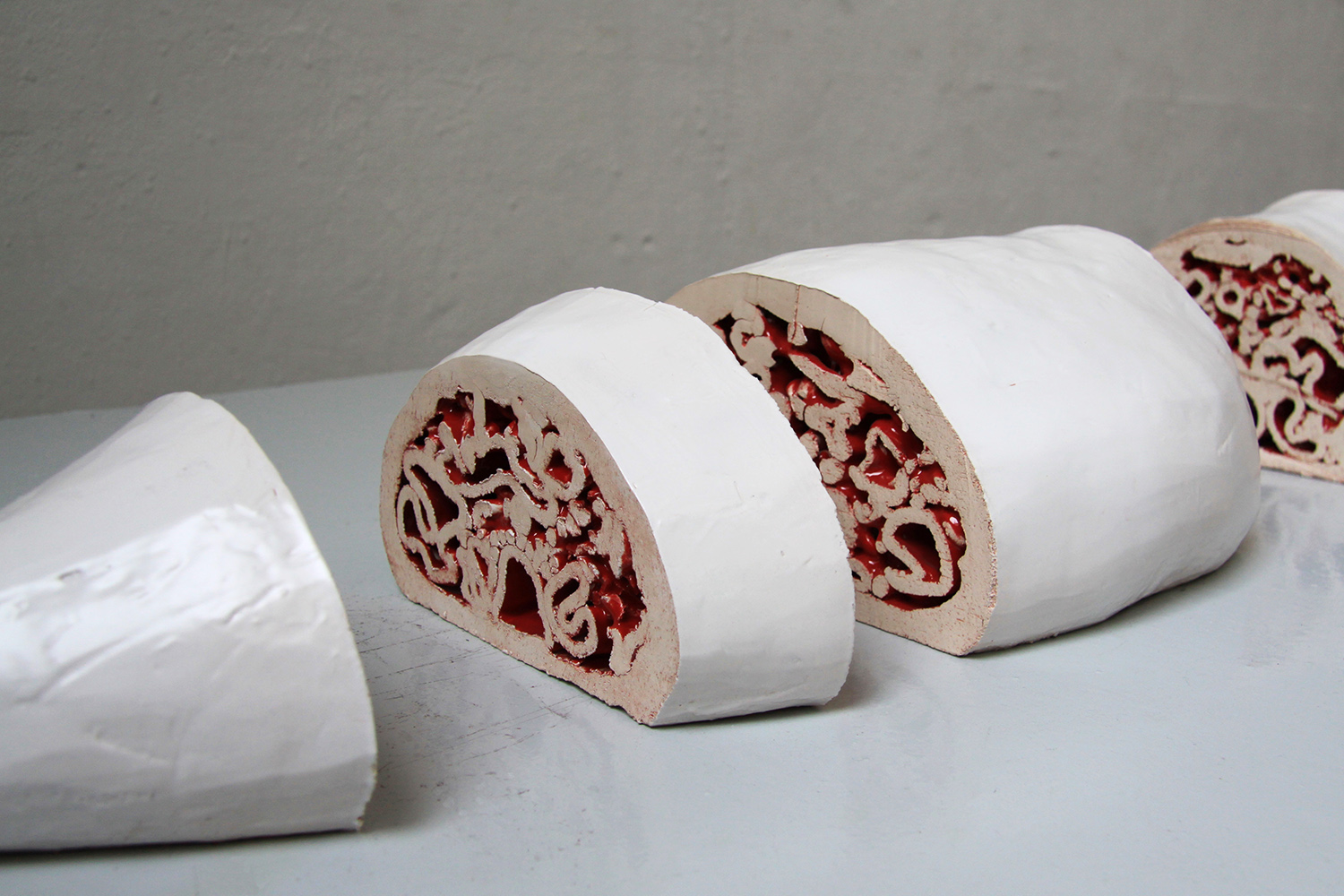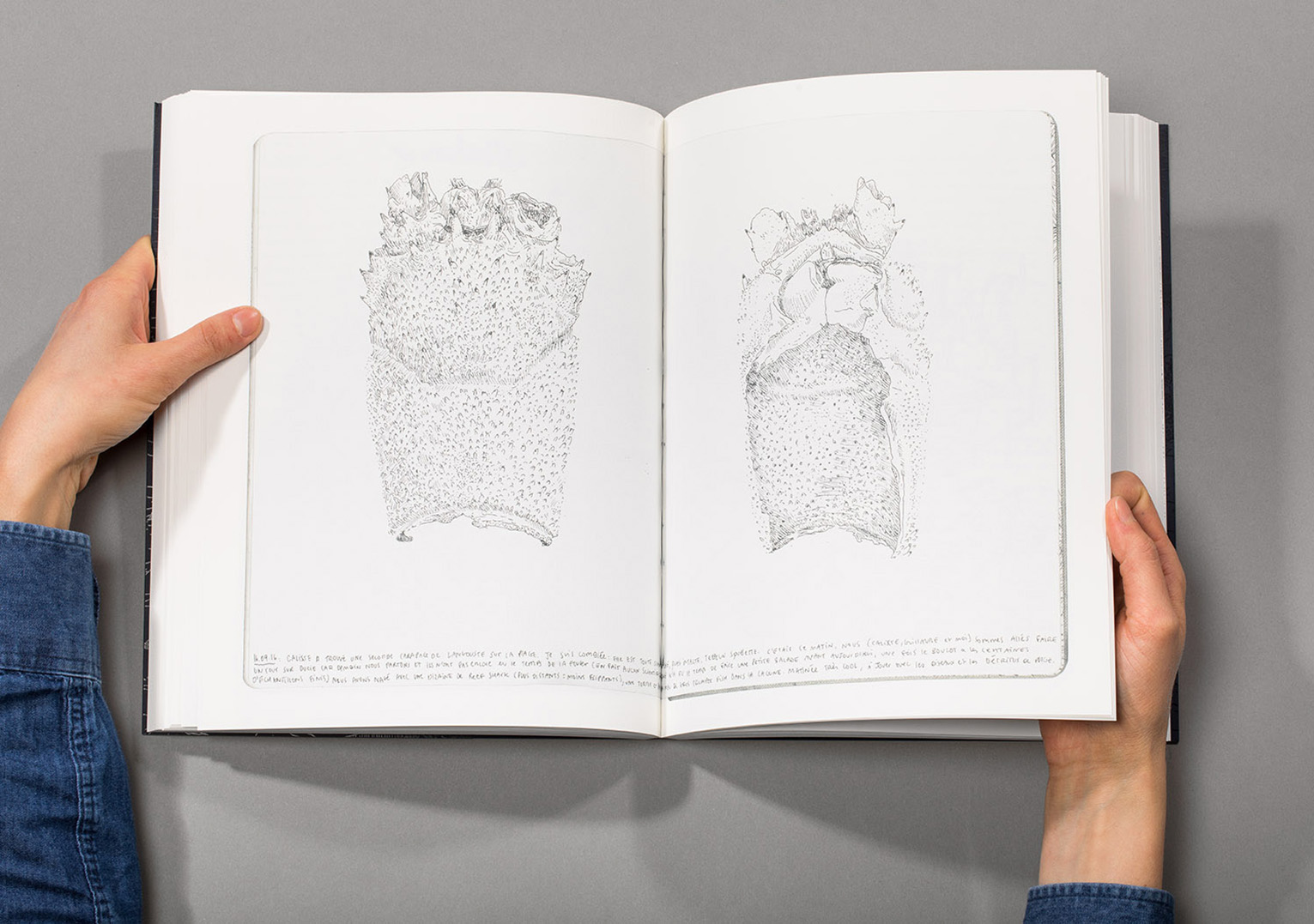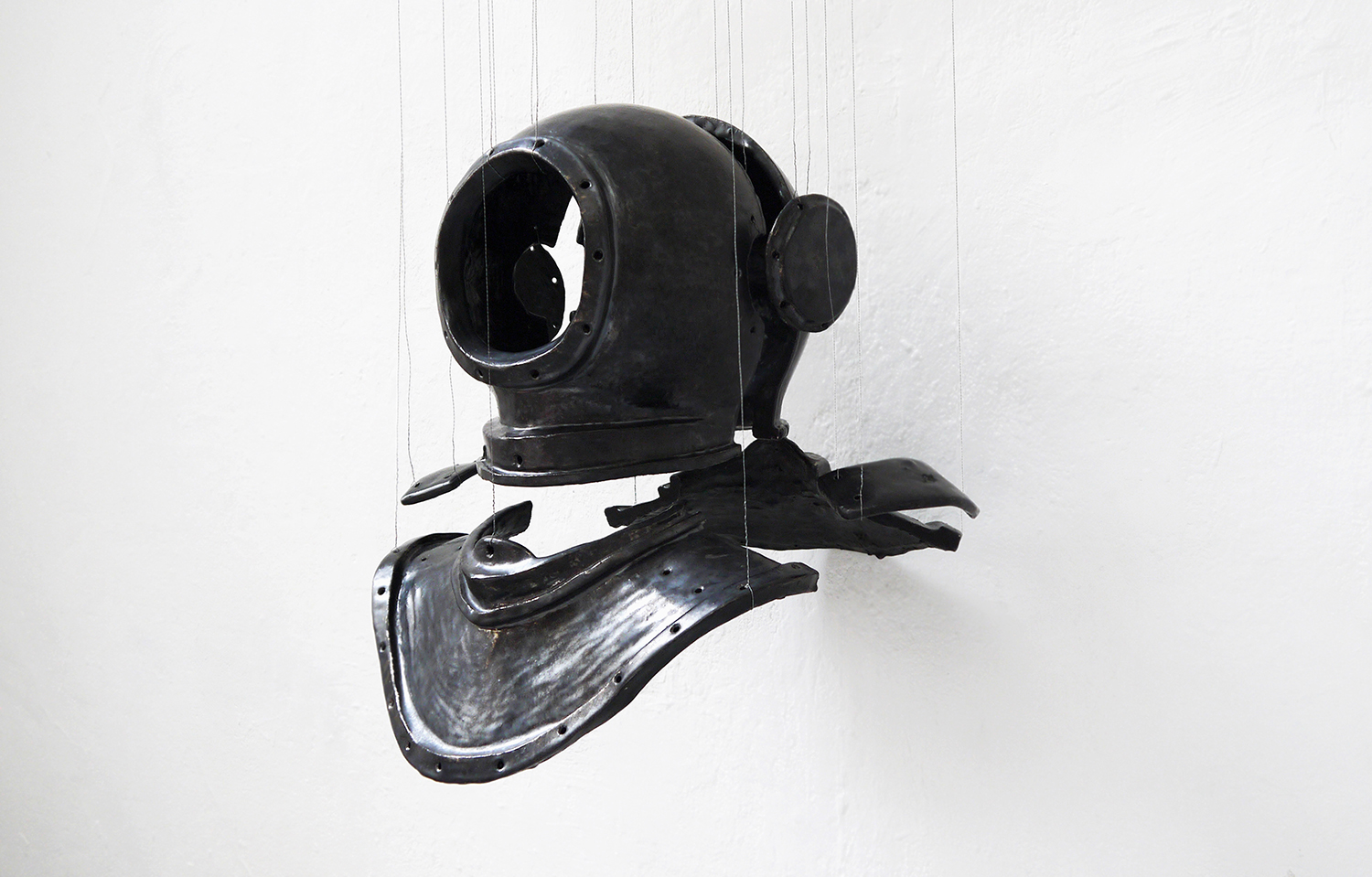On the surface of the ground floats a constellation of hands and heads humans, water lilies, and fish heads. Nothing in the disposition of the constituent elements of this strange marsh has been left to chance: typologies come together and form a network complex of lines, squares, rhombuses. A geometric order is undeniably at work. Does the latter fall under the mandala Buddhist three-dimensional, Navajos sand painting or still geoglyphs drawn by the Nazca on the Peruvian soil? The represented space changes scale and becomes landscape, map or model of an imaginary island whose vertices are trimmed of war trophies (perhaps the head of an enemy planted in top of a mast as a sign of belonging, or markers of wealth related to vegetation or fishing …) Human figures, half immersed, with closed eyes, disappear gradually to the depths and carry underwater the memory of a land charged with mysteries. Through this archipelago of porcelain, expresses itself the taste of Elsa Guillaume for the aquatic world, its inhabitants dead or alive, the imagination both wonderful and worrying of the insular unknown that we also find, sometimes in the form of sea urchins at the time of the autopsy (triple sea urchin), sometimes of a giant squid ritually cut by the Amazons Indians (Spineless Squid). In contrast to being a long calm river, the ocean d’Elsa Guillaume is studded with “poiscaille”, molluscs, conquistadors, islands and indigenous cultures.
